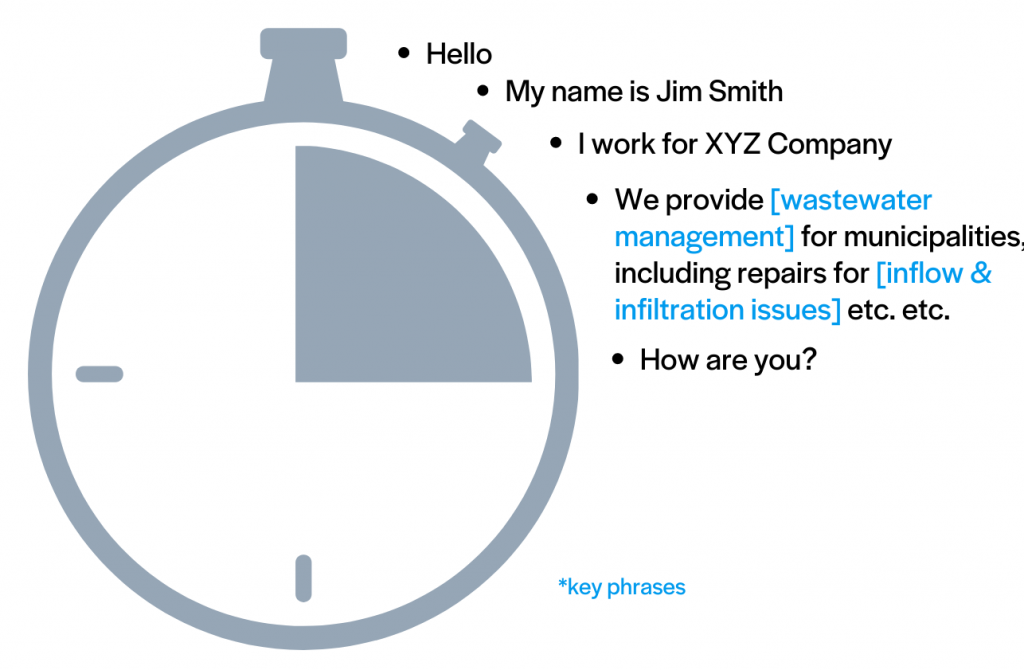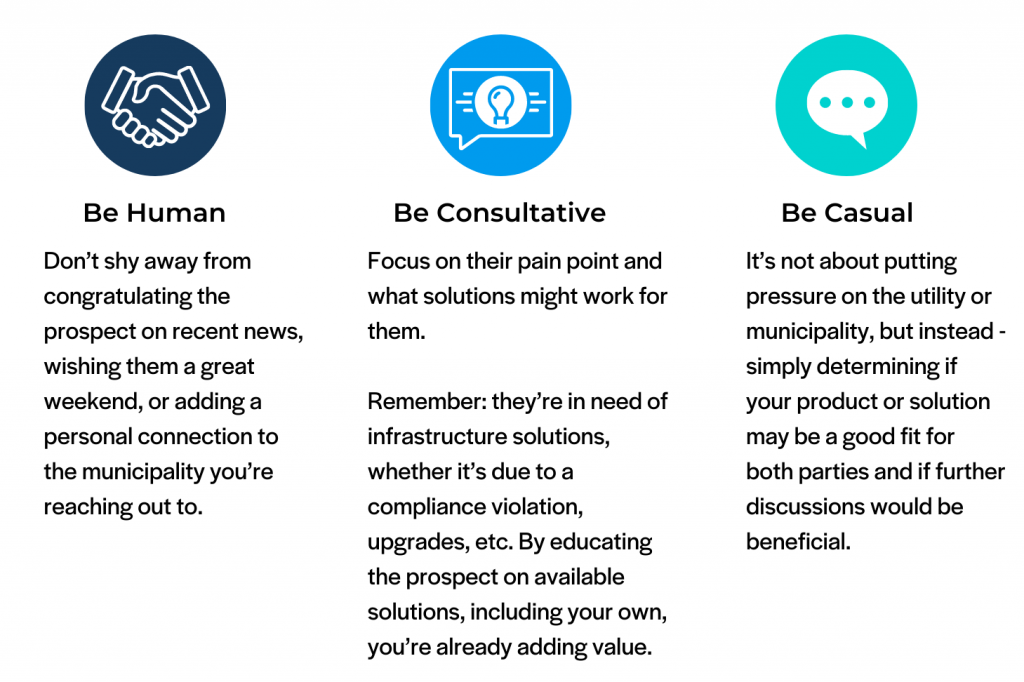Utilities and municipalities are difficult customers to engage.
Prospecting emails and calls both present different challenges when reaching out to these types of customers. With emails, the difficulty comes in positioning the message to encourage a response amidst hundreds of other reach outs from competitors. With prospecting calls, however, while you might have the prospect’s time at that moment: how do you keep them engaged? And how do you ensure the conversation keeps going and finds them interested in learning more?
To address these challenges, Citylitics has outlined 5 best practices for prospecting calls that we’ve seen succeed in driving sales across hundreds of business development teams. These best practices include:
- Planning ahead
- Having a strong opening prepared
- Tailoring the conversation to the utility or municipality
- Offering them a takeaway
- Reflecting on insights you gained during the call
1. Plan Ahead
In light of the hundreds of generic reach outs you’re competing against, you’re more likely to engage their attention and peak interest if you tailor your opening and the remainder of the call to the utility or municipality and their specific needs. Planning ahead is critical as it allows you the time to prepare.
- Before you reach out, review your Citylitics report, including links to source documents to prepare key phrases, speaking points, and questions about their pain point.
- Take a look at their website for news and project developments that you can congratulate them on as well.
- Review your call script: is the messaging aligned with the municipality or utility and the pain point referenced in your Citylitics report?
2. Prepare a Strong Opening
When it comes to prospecting calls, consider that you have less than 10 seconds to demonstrate to the utility or municipality contact the value for them in continuing your conversation.
- Within those first 10 seconds, make sure you:
- Provide your full name and clearly state the name of your organization
- Summarize what you do and the value you offer
- Pose the question “How are you?” or “how have you been?”
Remember that the value you offer is not the same as your standard company overview or who you are, but instead the relevance to them specifically (i.e. what solutions you provide directly in line with their specific needs).

Try sprinkling in key phrases relevant to the utility or municipality you’re speaking to, for example: “filtration systems” “water quality sampling”, or “surveying”. Within such a short window of time, you need to be strategic with word choice. Using key phrases not only helps position your call as meaningful and encourages them to continue the conversation – it also leaves them with a memorable impression. After the call is over, they’re more likely to associate your organization with a solution to their pain point than the other organizations they receive generic calls from.
The end of the opening is just as important as the start. Concluding with “how are you?” is 6.6X more likely to increase your chances of generating a response that moves the conversation forward.
3. Make it About Them
Your contact at the utility or municipality, just like the rest of us, will be most engaged when the focus is on them. What pain points are they experiencing as outlined in your Citylitics report?

When discussing their pain point, ask more than tell. In terms of moving the conversation along, allowing them to expand on their pain points reinforces the need (in their mind) for a solution and creates an opening for you to describe the ways in which your product or solution is a good fit based on what they’ve described. By having prompted them to elaborate, you’ll have a better understanding of which features they’ll want to hear most about.
Once you have the prospect speaking on the pain point, keep the conversation going without interrupting, by using phrases like:
- “Meaning?”
- “What do you mean by that?”
- “In terms of?”
- “In regards to?”
- “Have you had similar issues in the past?”
- “What are your immediate priorities?”
4. Offer a Takeaway
How do you ensure the continued interest of the municipality or utility after your call?
- Take the opportunity to offer them something complimentary, whether that’s a demo or consultation, or information like a case study or brochure. People naturally tend to gravitate towards complimentary offers, especially if all that is required from them is their time.
- Reaffirm their interest back to them: “it sounds like you’re interested in learning more about…”, and wrap it up with a follow-up meeting: “would you have a half hour to follow-up this week?” Mention any internal experts within your organization that you think should be included in the meeting, furthering your perception as an industry leader and a consultant.
Remember to ask for dates and times while on the call. Asking the contact to open up their calendar then and there will more likely result in a follow-up meeting than following up with dates and times later on.
5. Reflect
After your call, take a moment to ask yourself:
- Did you help uncover what their challenges are?
- Do you have a clear understanding of available budget and timelines?
- Do you know who the decision makers are?
- Did you effectively communicate your unique value add vs other available solutions?
- Are you aware of which of your competitors they may have spoken to?
Self reflection using questions like those above will help improve your future calling techniques and help to identify gaps in moving the opportunity forward.
Additional Pointers to Keep in Mind Throughout Your Call

Check out Citylitics’ 5 Proven Ways to Get an Email Response from Utilities below for more prospecting best practices.

